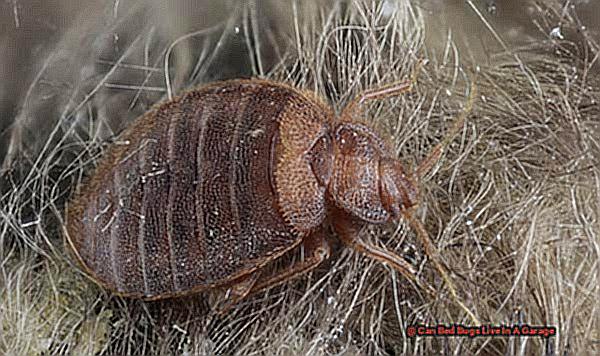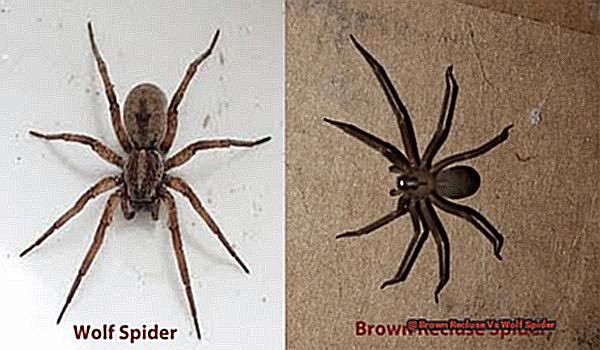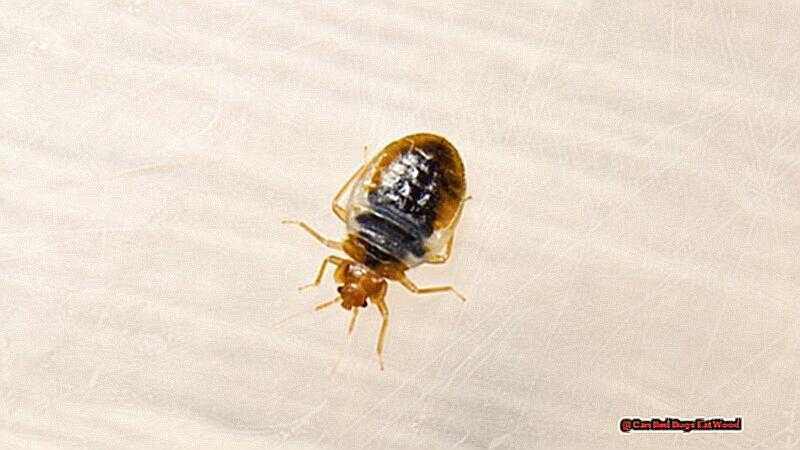Imagine waking up to find itchy, red bites covering your body.
You search your bed and furniture, only to discover the culprit – bed bugs. But what if these tiny pests weren’t just confined to your sleeping space?

What if they could travel through air vents and infest other areas of your home or workplace? It may sound like a nightmare, but the truth is, bed bugs are capable of traveling through air vents.
So, grab a warm beverage and join me as we uncover the unsettling truth about bed bugs and air vents.
Table of Contents
- 1 Can Bed Bugs Hide In Air Vents?
- 2 Can Bed Bugs Travel Through Heating Vents?
- 3 How Do Bed Bugs Travel From House To House?
- 4 Can Bed Bugs Travel Through Walls From One Apartment To Another?
- 5 Can Bed Bugs Travel Through Apartment Walls
- 6 Do Bed Bugs Live In Window Air Conditioners
- 7 Do Bed Bugs Like Cold Rooms
- 8 Where Do Bed Bugs Come From
Can Bed Bugs Hide In Air Vents?
The simple answer is yes, bed bugs can indeed take refuge in air vents. However, this is not a commonplace occurrence and there are several factors to consider before worrying about a bed bug infestation in your ventilation system.
Bed bugs are tiny, reddish-brown insects that feed off human blood. They have a knack for hiding and can reproduce rapidly, making them a troublesome pest to deal with. While they do not pose significant health risks, their bites can cause itching and discomfort. Most of the frustration with bed bugs stems from their elusive hiding spots rather than health concerns.
Where Do Bed Bugs Typically Hide?
To effectively combat bed bugs and prevent bites, it is crucial to know their preferred hiding spots. Some of the most common places where bed bugs can be found include:
- Mattresses and box springs
- Bed frames
- Hotel rooms
- Upholstered furniture
- Electronics
- Cluttered spaces
- Carpets and rugs
- Personal belongings
- Wall and ceiling voids
- Luggage storage areas
- Books in libraries
Can Bed Bugs Travel Through Air Vents?
While it is possible for bed bugs to make their way into air vents, it is not a common occurrence. The number of bed bugs found in air vents is typically small, and they are not drawn to the ventilation system. Air vents do not provide the necessary conditions for bed bugs to survive, such as warmth and a blood source.
Signs of Bed Bugs Near Air Vents
If you suspect that you have bed bugs in your home, it is important to check for signs near your air vents and mattresses. These signs may include bites on your skin, blood stains on your sheets or mattress, and fecal spots on your walls or furniture.
Preventing Bed Bugs in Air Vents
To prevent bed bugs from making their way into your home through air vents, there are several preventive measures you can take. This includes regularly cleaning and maintaining your air vents, as well as sealing any gaps around air ducts. Additionally, avoid bringing used furniture or belongings into your home without thoroughly checking for bed bugs first.
Seek Professional Help
If you discover that your home is infested with bed bugs, it is best to seek professional pest control services for proper treatment. These experts have the necessary knowledge and tools to effectively eliminate bed bugs from your home.
Can Bed Bugs Travel Through Heating Vents?
These minuscule insects, scientifically known as Cimex lectularius L., are infamous for their evasive behavior and resistance to insecticides. A common query when dealing with bed bugs is whether they can travel through heating vents. In this article, we will delve into the effectiveness of different methods for controlling bed bug populations and their ability to travel through heating vents.
Thermal Remediation: A Popular Non-Chemical Method for Managing Bed Bugs
Thermal remediation, also known as heat treatment, is a widely used method for eradicating bed bugs. It involves exposing these pests to high temperatures to kill them and their eggs. However, in some cases, bed bugs have been found to survive heat treatments. This can be due to factors such as not reaching lethal temperatures for a sufficient duration, re-infestation from insects that escaped during treatment, or the development of physiological resistance.
Studies have focused on determining the optimal temperature and exposure time for complete mortality or sublethal effects on growth and development. However, there has been limited research on the ability of bed bugs to develop heat resistance. While there may be an initial increase in survivorship after exposure to high temperatures, it does not persist beyond the fourth generation. This means that even if some bed bugs survive the initial heat treatment, they will not be able to reproduce and create a new infestation.
Sublethal heat exposure can also hinder feeding and development in bed bugs, making them weaker and less likely to survive long-term. Additionally, different populations of bed bugs from various locations and with varying levels of insecticide resistance have shown similar levels of tolerance to heat exposure.
Cold Stress: Another Effective Means of Control
In addition to heat treatments, cold stress has also been studied as a potential control method for bed bugs. Exposure to temperatures below -12°C (10°F) for at least 1 week results in 100% mortality. This method is often used alongside other control methods, such as heat or air circulation, to ensure complete eradication of bed bugs.
Steam Treatments: An Efficient and Eco-Friendly Solution
Steam treatments have also been found to effectively kill all life stages of bed bugs within 36 hours when combined with air circulation.
How Do Bed Bugs Travel From House To House?
These pesky bloodsuckers have a knack for traveling undetected, making it challenging to control their spread. While they are known for hitching a ride on clothing, luggage, and furniture, many wonder if they can also use air vents as a mode of transportation.
The Elusive Hitchhikers
Bed bugs possess unique abilities that make them excellent hitchhikers. Their small size and flat body allow them to hide in the tiniest of spaces, making them difficult to spot. Additionally, they can survive for months without feeding, giving them the flexibility to travel long distances.
These sneaky pests primarily move between houses by attaching themselves to items like clothing and luggage. They can also traverse through cracks and crevices in walls and floors, allowing them to travel from one room to another or even between houses.
But the question remains, can they utilize air vents for their travels?
The Air Vent Conundrum
Research shows that bed bugs have been known to use air vents as a means of transportation. A study conducted by Rutgers University revealed that these insects can crawl into wall voids and use air ducts to move between rooms.
This means that if two houses have connected ventilation systems, bed bugs can potentially travel from one house to another through them.
Furthermore, bed bugs have been found in public places such as hotels and hospitals, where they may have traveled through air vents from one room to another. This highlights the importance of regular maintenance and cleaning of ventilation systems in these places to prevent their spread.
Prevention is Key
While air vents may not be their preferred mode of transportation, bed bugs can indeed use them to move between houses. To avoid this, homeowners should take preventive measures such as sealing cracks and crevices and regularly maintaining their ventilation systems.
It is also crucial to be vigilant when staying in public places and thoroughly inspect clothing and luggage before leaving to prevent bringing bed bugs home.
Can Bed Bugs Travel Through Walls From One Apartment To Another?
The mere thought of these tiny, blood-sucking pests invading our homes is enough to send shivers down our spines. But what makes them even more alarming is their ability to travel through walls and gaps between apartments. As homeowners, it’s essential to understand how these unwanted houseguests move and what we can do to prevent their spread.
Bed bugs are attracted to warmth and carbon dioxide, which means they can easily sense and find potential hosts in other rooms or properties. If conditions allow, such as shared walls or close proximity, they can easily move between nearby properties. This means that even if your own apartment is pest-free, you could still be at risk of an infestation if your neighbor has a problem.
But how do these sneaky pests actually travel through walls? Well, their small size allows them to fit into tiny spaces, making it easy for them to navigate through cracks and crevices. They can also use doorways, ceiling tiles, and wall receptacles as entry points. And don’t underestimate them – they can also use electrical and plumbing chaseways as hidden pathways to move from one apartment to another.
So, how can you tell if your neighbor has a bed bug infestation? Look out for bites on humans or pets, blood spots on sheets, and a musty odor. If you suspect a problem, address it immediately. Neglecting nearby properties with bed bug infestations not only puts you at risk but also makes eradication more difficult and expensive.
As homeowners, it’s our responsibility to work together with property owners and managers to prevent the spread of bed bugs between apartments. Regular inspections, proper maintenance of shared spaces, and timely treatment of infestations are crucial in keeping these pests at bay.
Can Bed Bugs Travel Through Apartment Walls
Bed bugs are infamous for being hitchhikers and can easily be conveyed from one place to another in luggage, garments, and personal effects. But can these bothersome critters truly migrate through apartment partitions and invade your sanctuary? The concise response is yes.
These petite, blood-sucking insects can maneuver through the tiniest cracks and crevices, making it effortless for them to travel between apartments. They can also traverse through electrical outlets, pipes, and other openings in walls.
So, how can you shield your abode from these unwelcome invaders?
First and foremost, routinely inspect your home for indications of bed bugs. Search for small brown or reddish stains on your mattress or bedding, as well as minuscule black dots (bed bug excrement) on furniture or walls. If you suspect an infestation, promptly contact a professional exterminator.
When relocating to a new apartment, it’s crucial to inquire about any past bed bug invasions and the treatment plans utilized. This will provide you with an understanding of the potential risk and aid in taking necessary precautions.
It’s also imperative to educate yourself about bed bugs and their behaviors. By comprehending their movements and habits, you can proactively take measures to prevent their entry into your abode.
One prevalent method of bed bug proliferation is through used furniture and mattresses. If you’re purchasing secondhand items, be sure to meticulously scrutinize them for any signs of bed bugs before introducing them into your home.
In addition to regular inspections and proper hygiene practices, sealing cracks and gaps in walls can also help deter bed bugs. These small entry points can easily go unnoticed but can provide effortless access for bed bugs to migrate through.
However, if you do find yourself facing a bed bug infestation, it’s crucial to collaborate with a professional exterminator. They possess the knowledge, expertise, and tools to effectively eradicate these pests from your abode.
In conclusion, bed bugs can indeed migrate through apartment partitions and invade your home. By taking preventative measures and remaining vigilant, you can safeguard your abode and loved ones from these bothersome invaders.
Do Bed Bugs Live In Window Air Conditioners
These tiny, reddish-brown insects are notorious for their ability to hide and spread quickly, making them a challenging pest to get rid of. While most people associate bed bugs with beds and furniture, there is one unexpected hiding spot that often goes overlooked – window air conditioners.
What are bed bugs and how do they spread?
Bed bugs are parasitic insects that feed on the blood of humans and animals. They are skilled hitchhikers and can easily travel from place to place by attaching themselves to clothing, luggage, and furniture. This makes it effortless for them to infest new areas rapidly.
Perplexity: The unexpected hiding spot of bed bugs
Despite popular belief, bed bugs can be found in various places throughout a home. One unexpected location is inside window air conditioners. These pests are attracted to the dark and cramped spaces inside air conditioners, making them an ideal hiding spot.
Burstiness: The rapid spread of bed bugs through air conditioners
The presence of bed bugs in an air conditioner can lead to a rapid spread throughout the house. As the air conditioner is turned on, these pests can be blown into other rooms, allowing them to infest new areas quickly. This burstiness makes it challenging to control the infestation and requires immediate attention.
Prevention:
To prevent a bed bug infestation through window air conditioners, regular inspection and cleaning are crucial. This includes vacuuming and wiping down the unit, as well as checking for any signs of infestation. It is also essential to seek professional help if an infestation is suspected, as DIY methods may not effectively eradicate all bed bugs. By taking these preventive measures, homeowners can avoid the hidden threat of bed bugs infesting their window air conditioners.
Do Bed Bugs Like Cold Rooms
The Optimal Temperature for Bed Bugs
Before we explore the effects of cold temperatures on bed bugs, let’s first understand their preferred temperature range. These insects thrive in warm environments, with their ideal temperature being between 80-85 degrees Fahrenheit. At this temperature, they are most active and can reproduce at a faster rate. However, they can still survive in other temperatures, both colder and warmer.
The How Cold is Too Cold for Bed Bugs?
Now, let’s address the main query: can bed bugs survive in cold rooms? The answer is yes, but with some conditions. Bed bugs can endure cooler temperatures, but they are not as resilient as they are in warmer conditions. If exposed to temperatures below 0 degrees Fahrenheit for four or more days, they will likely perish. However, simply lowering your thermostat will not eradicate the issue entirely.
The Impact of Cold Temperatures on Bed Bugs
While colder temperatures do have an effect on bed bugs, it may not be what people hope for. Although they may die if exposed to extremely low temperatures for an extended period of time, colder temperatures cause them to move slower. This means it may take longer for them to find new hiding spots or reach their food source. Additionally, bed bugs have a natural antifreeze protein that enables them to survive freezing temperatures for short periods.
Preventing Bed Bugs in Cold Rooms
So, how can you prevent bed bugs from surviving in cold rooms? The key is to use a combination of methods. Firstly, regular cleaning and decluttering can reduce the chances of bed bugs finding hiding spots in your home. Secondly, sealing cracks and crevices around your windows, doors, and baseboards can prevent them from entering your home. And lastly, if you suspect a bed bug infestation, seek professional help immediately to effectively eliminate them.
In conclusion, while bed bugs can survive in cold rooms, they are not as resilient as they are in warmer temperatures. Extreme cold temperatures can kill them, but it is not a foolproof solution.
Where Do Bed Bugs Come From
Bed bugs possess a cunning ability to conceal themselves and hitch a ride into our abodes, causing an endless cycle of irritation and discomfort. But how exactly do these bothersome bugs infiltrate our personal spaces? Let us delve into the various ways in which bed bugs can invade our homes and where they prefer to take refuge.
Travelling on Garments or Luggage
The most common mode of entry for bed bugs is by latching onto clothing or luggage. These pests are adept at clinging onto fabric and can easily journey with you from one infested location to another. It is therefore crucial to thoroughly examine your belongings after travelling, particularly if you have stayed in a hotel or guest room.
Infested Objects Brought into the Home
Another prevalent way bed bugs can enter a house is through second-hand furniture and clothing. These crafty critters can easily conceal themselves in the seams and crevices of used items, only revealing their presence once they begin to multiply. Before introducing any pre-owned items into your living space, it is imperative to thoroughly inspect them and consider treating them with heat or cold to exterminate any potential bed bugs.
Proximity to Infested Dwellings or Objects
Bed bugs are skilled voyagers and can effortlessly move between neighboring houses or apartments via shared ducts or false ceilings. If you reside in close proximity to an infested dwelling or have recently purchased used furniture from a nearby thrift store, there is a high likelihood that bed bugs may have made their way into your home.
Now that we have explored the various ways bed bugs infiltrate our homes, let us uncover their preferred hiding spots. These pesky pests are experts at finding secluded areas to breed and feed without being detected.
Seams and Cushions of Furniture
Bed bugs have a penchant for hiding in the seams and cushions of furniture, particularly beds and couches. These areas offer them easy access to their source of sustenance (namely, humans) while also providing a safe haven to lay eggs and evade predators.
Curtains and Wall Hangings
Curtains and wall hangings can also serve as hotspots for bed bugs, as they provide a dim and secluded area for them to conceal themselves. It is advisable to regularly inspect these areas, especially if you suspect a bed bug infestation in your home.





